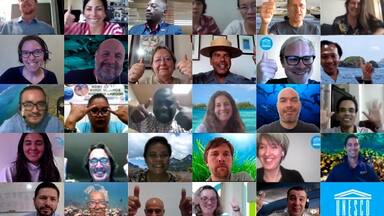COVID-19 and marine World Heritage: A pathway for a Resilient Ocean
As nearly half of the global population went into lockdown in recent months, rare wildlife sightings emerged in the most unexpected places. CO2 emissions dropped by 8% since the start of the year, the largest decrease ever recorded. Nature seemed to finally take a breath from the relentless human pressures that have been the primary reason for biodiversity reduction and habitat loss for at least a century.
Yet, the first online meeting with the local guardians of UNESCO’s 50 World Heritage marine sites (since the COVID-19 pandemic) shows there is little to celebrate. For many marine World Heritage sites, the abrupt halt in tourism revenues paints a bleak, uncertain outlook for the future. For most, it reveals how a sustainably protected, resilient ocean depends on people as much as nature.
In Tubbataha Reefs Natural Park (Philippines), for example, tourism revenues make up over half of the conservation budget needed to protect the large, remote areas from illegal fisheries. In iSimangaliso Wetland Park (South Africa), sustainable tourism generated over 10,000 jobs since the inscription of the site on the UNESCO World Heritage List in the late 1990s. Tourism lifted the entire region out of poverty and laid the basis for the sustainable management of the property’s unique characteristics, both on land and in the ocean, for decades to come. Coral scientists at Seychelles Aldabra Atoll – among the most renowned in the world – now face an uncertain future as monitoring and surveillance programme funds will run dry by the end of summer if nearby tourism hotspots fail to attract paying visitors.
This all comes in what was set to be a landmark year for biodiversity. The year 2020 was to be the “Super Year for Biodiversity “ culminating in a global biodiversity conference this autumn where new biodiversity targets were due to be set for the next decade.
While the timetable has changed, the COVID-19 pandemic highlights some critically important truths about the fragile balance between nature and people, and hence provides a unique opportunity to resolutely choose the pathway of resilience. For the world’s 50 flagship marine protected areas designated as UNESCO World Heritage – the pathway to a resilient ocean is clearly one where people and nature live in harmony and where climate adaptation plans are designed to let both people and nature thrive.
Read more about how to design innovative, holistic resilient strategies at UNESCO World Heritage sites: https://whc.unesco.org/en/reefresilience/









